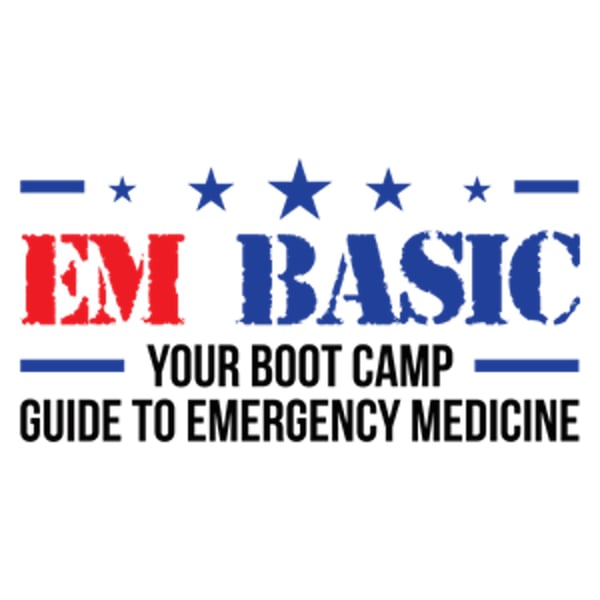Shortness of breath
EM Basic
EM Basic LLC
4.6 • 665 Ratings
🗓️ 11 March 2012
⏱️ 39 minutes
🧾️ Download transcript
Summary
Shortness of breath is a chief complaint that we encounter each day in the ED. This chief complaint encompasses a huge differential and this is a long podcast. As always, I'll break this chief complaint down into the diagnoses that we can't miss and how to treat the underlying causes of shortness of breath for both kids and adults.
Transcript
Click on a timestamp to play from that location
| 0:00.6 | This is Steve Carroll, and you're listening to the EM Basic Podcast. |
| 0:04.6 | Today we'll talk about shortness of breath, which is a common chief complaint that we face every day in the ED. |
| 0:10.1 | This is a huge topic, and each cause of shortness of breath could be its own podcast. |
| 0:14.9 | What we'll do is group the causes of shortness of breath into several broad categories and review how to treat the major causes. |
| 0:21.6 | As always, this podcast doesn't represent the views or opinions of the Department of Defense, |
| 0:25.5 | the U.S. Army, or the Shawshack EM Residency Program. |
| 0:28.2 | So let's get started where we always start, the vitals. |
| 0:31.7 | Obviously, you'll look at everything, but pay special attention to the respiratory rate in |
| 0:35.4 | Pulse Ox. |
| 0:36.6 | The Pulse Ox can be a good indicator of how well your patient is oxygenating, and we always |
| 0:41.3 | like to see it above 95%. But that won't always be the case. We'll talk more about that later. |
| 0:47.5 | Here's the thing about respiratory rate. You'll probably see a respiratory rate of 16 or 18 on the |
| 0:53.0 | chart for most adults as a normal respiratory rate. If you of 16 or 18 on the chart for most adults as a normal respiratory |
| 0:55.9 | rate. If you see 16 or 18, it means that the person doing the vitals probably just eyeballed |
| 1:01.9 | the respiratory rate and thought it was normal and the patient didn't appear to be teckypnic. |
| 1:07.0 | A respiratory rate of 22 or higher for an adult usually means that they have some degree of tachypnea. |
| 1:12.8 | This is for convenience. |
| 1:14.5 | We don't have the time to count out respiratory rates for a full minute for each stubbed toe that comes through triage, |
| 1:20.1 | and in the end, there is a much clinical difference between 22 and 24 breaths per minute. |
| 1:25.0 | They are both tecimic and should be addressed. |
| 1:28.6 | In kids, it becomes much more important to accurately count out the respiratory rate. We'll talk more about that later. |
| 1:33.6 | Whenever you're dealing with the chief complaint of shortness of breath, you have to walk to the |
... |
Please login to see the full transcript.
Disclaimer: The podcast and artwork embedded on this page are from EM Basic LLC, and are the property of its owner and not affiliated with or endorsed by Tapesearch.
Generated transcripts are the property of EM Basic LLC and are distributed freely under the Fair Use doctrine. Transcripts generated by Tapesearch are not guaranteed to be accurate.
Copyright © Tapesearch 2025.

